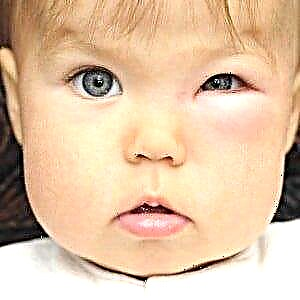Summer is a hot time when you want to open all the windows wide open and feel the coolness at least at night. However, no matter how well the window frames, double-glazed windows and mosquito nets are made, almost everyone suffers from uninvited guests - mosquitoes. And they are carriers of many diseases, among which dirofillariosis occupies a special place.
What is dirofilariasis?
Dirofillariasis is a disease that affects many organs and systems. Its development is caused by the larva of the nematode helminth - dirofillaria. The prevalence of the disease cannot be reliably determined, since it is quite difficult to diagnose it.
How does the infection take place?
Initially, the helminth comes in with the bite of a mosquito previously infected by cats or dogs. It infiltrates under the skin, from where it can migrate on its own. Due to some peculiarities, the nematode cannot become an adult in the human body.
What is ocular dirofilariasis?
Ophthalmic dirofilariasis is one of the forms of the disease, characterized by the localization of the parasite in the eye cavity and / or in the paraocular region. During migration, most often the parasite is inside a specific capsule, but in some cases this shell can burst, and the helminth begins to migrate on its own.
Dirofillaria is mainly found under the skin of the eyelids, which greatly facilitates the diagnosis of the disease. It is extremely rare that it is encapsulated in the internal structures of the eyeball (anterior chamber of the eye, vitreous body).
Symptoms of the disease
The manifestations of ocular dirofilariasis are diverse:
 If the parasite is located under the skin of the eyelids and / or the conjunctiva of the eye, it can easily be found in the form of a tourniquet or vessel that spontaneously moves and changes its shape.
If the parasite is located under the skin of the eyelids and / or the conjunctiva of the eye, it can easily be found in the form of a tourniquet or vessel that spontaneously moves and changes its shape.- If the capsule with dirofillaria was encapsulated under the conjunctiva of the upper or lower eyelid, then symptoms characteristic of chalazion appear (the presence of a rounded formation, a pronounced feeling of a foreign body in the eye, lacrimation), which does not lend itself to conservative treatment methods.
- Helminth is capable of causing conjunctivitis, the genesis of which remains unclear before detection.
- If the parasite enters the parabulbar or retrobulbar tissue, exophthalmos, double vision, tenonitis, pronounced edema and pain occur.
- General symptoms may also occur - an increase in body temperature to subfebrile numbers, dyspeptic disorders, asthenia and headache.
- If the helminth is in the vitreous body or anterior capsule, then one of the first manifestations is a decrease in visual acuity, to which the appearance of a large floating spot in front of the eye and the appearance of vitreitis are soon added.
If symptoms occur, seek medical attention immediately.
How is the disease diagnosed?
If it is possible to detect the movement of dirofillaria under the skin or under the conjunctiva, the diagnosis can be established without problems.
The thought of this disease may be further prompted by the fact that a child has mosquito bites.
Laboratory methods make it possible to confirm dirofillariasis only indirectly by an increase in eosinophils in the blood or an increase in antibody titers to parasite antigens.
Cytomorphology, in turn, allows you to establish the type of helminthiasis due to the study of tissue material removed during the operation.
How is ocular dirofilariasis treated?
The only method to get rid of the parasite is surgery.
The drug Ditrazin is prescribed for children over 12 years old. It is taken just before the operation. The main pharmacological action is that it immobilizes the nematode, allowing it to be removed. In the postoperative period, standard anti-inflammatory drugs and antibiotics are taken. Additionally, antihistamines, sorbents, immunomodulators, antioxidants, hepatoprotectors, sedatives are prescribed.
Remember, self-medication with traditional medicine recipes can be dangerous for your child's health. Before starting treatment, you should consult an ophthalmologist.

 If the parasite is located under the skin of the eyelids and / or the conjunctiva of the eye, it can easily be found in the form of a tourniquet or vessel that spontaneously moves and changes its shape.
If the parasite is located under the skin of the eyelids and / or the conjunctiva of the eye, it can easily be found in the form of a tourniquet or vessel that spontaneously moves and changes its shape.

